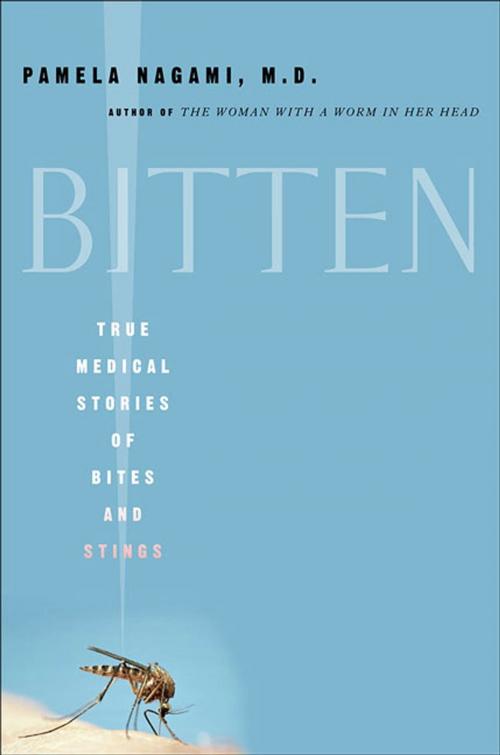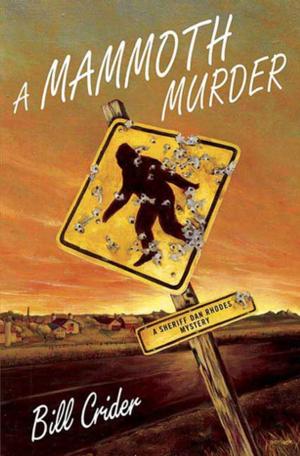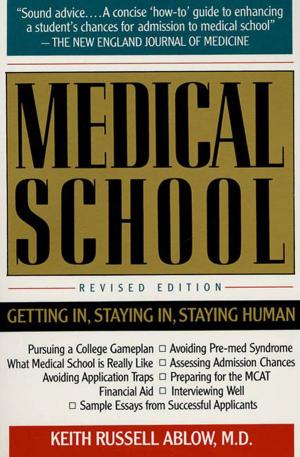Bitten
True Medical Stories of Bites and Stings
Nonfiction, Health & Well Being, Medical, Reference, Essays| Author: | Pamela Nagami, M.D. | ISBN: | 9781466827646 |
| Publisher: | St. Martin's Press | Publication: | September 1, 2005 |
| Imprint: | St. Martin's Press | Language: | English |
| Author: | Pamela Nagami, M.D. |
| ISBN: | 9781466827646 |
| Publisher: | St. Martin's Press |
| Publication: | September 1, 2005 |
| Imprint: | St. Martin's Press |
| Language: | English |
We've all been bitten. And we all have stories.
The bite attacks featured in this dramatic book take place in big cities, small towns, and remote villages around the world and throughout history. Some are as familiar and contemporary as encounters with mosquitoes in New York City and snakes in southern California's Hollywood Hills or as exotic and foreign as the tsetse in equatorial Africa, the camel in Riyadh, and the Komodo dragon in Indonesia. While others, such as people biting other people---well, these are in a category of their own.
Among the startling stories and fascinating facts in Bitten.
o A six-year-old girl descends into weeks of extreme lassitude until a surgeon plucks an engorged tick from her scalp.
o A diabetic living in the West Indies awakes one morning to a rat eating his left great and second toes.
o A twenty-eight-year-old man loses a third of his nose to a bite by his wife.
o In San Francisco, after a penile bite, a man develops "flesh-eating strep," which spreads to his lower abdomen.
o Severe bites by rabid animals to the face and digits, because of their rich nerve supply, are the most likely to lead to rabies and have the shortest incubation periods.
o Following the bite of a seal or contact with its tissues, sealers develop such agonizing pain and swelling in their bites that, far from medical care, they sometimes amputate their own fingers.
o Perhaps the most devastating human bite wound injuries are those involving the nose; doctors in Boroko near Papua, New Guinea, reported a series of ninety-five human bites treated in the Division of Surgery from 1986 to 1992---twelve were to the nose, nine in women, and three in men, and in most of the cases, the biter was an angry spouse.
With reports from medical journals, case histories, colleagues, and from her own twenty-eight-year career as a practicing physician and infectious diseases specialist, Pamela Nagami's Bitten offers readers intrigued by human infection and disease and mesmerized by creatures in p0the wild a compulsively readable narrative that is entertaining, sometimes disgusting, and always enjoyable.
We've all been bitten. And we all have stories.
The bite attacks featured in this dramatic book take place in big cities, small towns, and remote villages around the world and throughout history. Some are as familiar and contemporary as encounters with mosquitoes in New York City and snakes in southern California's Hollywood Hills or as exotic and foreign as the tsetse in equatorial Africa, the camel in Riyadh, and the Komodo dragon in Indonesia. While others, such as people biting other people---well, these are in a category of their own.
Among the startling stories and fascinating facts in Bitten.
o A six-year-old girl descends into weeks of extreme lassitude until a surgeon plucks an engorged tick from her scalp.
o A diabetic living in the West Indies awakes one morning to a rat eating his left great and second toes.
o A twenty-eight-year-old man loses a third of his nose to a bite by his wife.
o In San Francisco, after a penile bite, a man develops "flesh-eating strep," which spreads to his lower abdomen.
o Severe bites by rabid animals to the face and digits, because of their rich nerve supply, are the most likely to lead to rabies and have the shortest incubation periods.
o Following the bite of a seal or contact with its tissues, sealers develop such agonizing pain and swelling in their bites that, far from medical care, they sometimes amputate their own fingers.
o Perhaps the most devastating human bite wound injuries are those involving the nose; doctors in Boroko near Papua, New Guinea, reported a series of ninety-five human bites treated in the Division of Surgery from 1986 to 1992---twelve were to the nose, nine in women, and three in men, and in most of the cases, the biter was an angry spouse.
With reports from medical journals, case histories, colleagues, and from her own twenty-eight-year career as a practicing physician and infectious diseases specialist, Pamela Nagami's Bitten offers readers intrigued by human infection and disease and mesmerized by creatures in p0the wild a compulsively readable narrative that is entertaining, sometimes disgusting, and always enjoyable.















